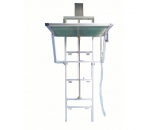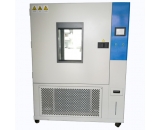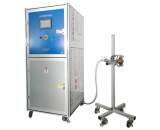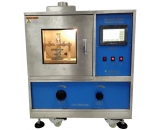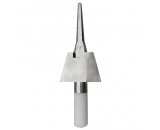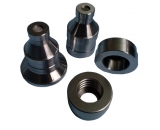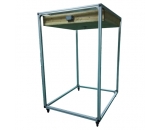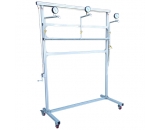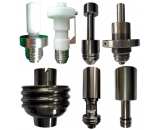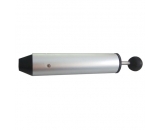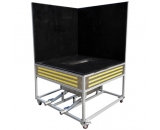|
|
Colorfastness: Dye Transfer in Storage; Fabric-to-Fabric
* S4 {& P c! }& t. x$ \* zDeveloped in 1985 by Committee RR92; editorially revised and reaffirmed 1986, 1992, 1997, 2002; reaffirmed 1987; editorially revised 1995, 2001.) w2 R3 v& c% g( k- c# O
1. Purpose and Scope
2 Z! t) J2 E9 D# {7 J/ h1.1 The storage of garments made with component parts of more than one shade sometimes results in the transfer of dye from one area to another, normally from the darker to the lighter shade. This phenomenon is distinct from sublimation temperature of dyes as well as with non-subliming dyes.% j( _" f2 r! S6 {3 c
1.2 Dyes transfer occurs when garments are folded with different shades in intimate contact with each other. Normally the amount of dye transferred is intensified when moisture is present, and thus the problem is more severe during warm, humid weather or when garments are steamed immediately before storage. Storage in plastic bags tends to maintain the initial relative humidity of the garment environment and can aggravate or reduce transfer depending on the condition of the fabric when it enters the bag.
4 O8 R4 N! y% V0 i" }9 i: D1 f6 O1.3 This test method is intended to estimate if color transfer might be expected to occur during prolonged periods of storage. In general, no problems will be expected under normal conditions of storage or time-delay, if color transfer dose not occur under the conditions specified in section 7(procedure).9 v, F4 J! ? z6 P
1.4 This test method may be used also to assess potential color transfer problems that relate to finishing. Some dyes are inherently more prone to transfer than others, and some chemical finishes and finishing conditions accelerate transfer.
$ F$ P" B8 v, k2. Principle
# h' T% n, h4 z4 d! z8 r9 Y1 R2.1 dyed and finished test specimens are sandwiched between pre-wet multifiber fabric and a selected second fabric and a selected second fabric, placed in a Perspiration Tester for 48 h at room temperature, dried and rated.1 {$ z7 j1 b& D k- l
3. Terminology
^% W C& u- C3.1 colorfastness, n.-the resistance of a material to change in any of its color characteristics, to transfer of its colorant(s) to adjacent materials or both, as a result of the exposure of the material to any environment that might be encountered during the processing, testing, storage or use of the material.3 ?7 n) R+ ? h& R- a
3.2 dye, n.-a colorant applied to or formed in a substrate, via the moleculary dispersed state, which exhibits some degree of permanence.
/ Y; B- h; s8 k r7 ], [% t. p3.3 transfer, n.-in textile processing, testing, storage and use, movement of a chemical, dye or pigment between fibers within a substrate or between substrate.& X8 y% k6 h& y& {
4. Safety Precautions
( ~) r0 V) R9 Q; I% U+ mNOTE: These safety precautions are for information purposes and are not intended to be all inclusive. It is the user’s responsibility to use safe and proper techniques in handling materials and equipment in this test method. Manufacturers MUST be consulted for specific details such as material safety data sheets and other manufacturer’s recommendations. All OSHA standards and rules must also be consulted and followed.3 E, q9 b/ S0 i5 x% _/ i7 e
4.1 Good laboratory practices should be followed. Wear safety glasses in all laboratory area.
: Z3 t3 K. G/ y4.2 Manufacturers safety recommendations should be followed when operating laboratory testing equipment.
. B9 O H2 o0 k6 H7 r4.3 Observe padder safety. Ensure adequate guard at the nip point. Normal safeguards on pad should not be removed. A foot-operated kickoff is recommended.7 y3 Y" L1 e/ T
5. Apparatus and Materials$ @! `1 p/ o( e0 I
5.1 AATCC Perspiration Tester (see 11.1)." d5 O, r; G" f. {: \
5.2 Plastic bag, polyethylene, large enough to contain Perspiration Tester. A Ziploc bag of suitable size may be used.
9 S+ o5 p2 ~7 o$ \5.3 Multifiber Test Fabric No. 10 (see 11.1)." B) t( r( w5 f' X9 M. Y
5.4 White fabric of same fiber composition as test specimens. If not available, cotton cloth as defined in AATCC Method 8.* ?" g. R& R8 H9 ?4 |" @% O3 n
5.5 Distilled or deionized water.9 o3 w) H+ J# m
5.6 Evaporating dish or glass beaker having the capacity to hold 50 mL of water. Wet sponge may be also be used.
5 K9 n0 s0 p( Y0 y2 m: c; l5.7 Chromatic Transference Scale (see 11.1).) l2 {4 P6 W8 B, r3 f$ g F% k6 O
5.8 Gray Scale for Staining (see 11.1).
# W5 r; ~! f/ K' Z8 s6. Test Specimens
, E2 u# b9 K* `* p4 ], u6.1 Prepare 5.7 ×5.7 cm (2.25 × 2.25 in.) test specimens form each sample of the dyed fabric to be tested.9 U4 R7 v" u6 {% Z4 q
6.2 Prepare 5.7 × 5.7 cm (2.25 × 2.25 in.) multifiber and 5.7 × 5.7 cm (2.25 × 2.25 in.) white fabric swatches./ z l* l* K+ l, `. D( _
7. Procedure$ v6 V0 E: n# V& {" _
7.1 Option Ⅰ.
0 j; D& z6 A' } V* Z7.1.1 Immerse in distilled or deionized water at 24 + 3 oC (75 + 5 oF) both the multifiber fabric and the fabric selected for the opposite side of the sandwich (see 5.4). The wet pickup of these fabrics should be 100-110% (see 11.2). Do not wet out the specimen to be tested to prevent removal of dye or finish before testing begins.
) Y8 W1 J1 t p( A0 j% S3 b& X7.1.2 Prepare a sandwich with the dyed test specimen between pre-wet multifiber cloth and the pre-wet white swatch.
" K+ m# A( U7 r7 R; m& {7.1.3 Clamp the sandwich (prepare as directed in 7.1.2) between two clean plates of the Perspiration Tester. Set the Perspiration Tester as instructed in 8.4.1 of AATCC Method 15 except that the unit is not placed in an oven.
/ D) Y) f( b: g+ A0 W0 b7.1.4 Enclose the Perspiration Tester in a polyethylene bag along with a dish (see 5.6) containing at least 50 mL of distilled or deionized water to maintain high relative humidity in the polyethylene bag. Seal the opening in the bag with a twist tie or rubberband if Ziploc bag is not used (see 5.2). Allow to remain 48 h at room temperature (24 ±3oC). Take care that the Perspiration Tester does not fall into the water dish.
; c" k- p9 h- A# s' a7.1.5 Remove the cover from the Perspiration Tester, remove the sandwiched specimens from the tester and separate the swatch. Allow the swatches to dry at room temperature.
7 c# i5 D; ^; P1 R4 K% _ l7.2 Option Ⅱ.# _/ a' C1 {$ V' y7 J5 Y; t
7.2.1 an accelerated test procedure has been used showing approximately the same results on some dyed or finished fabrics by placing the test apparatus(see 7.1.4) in a force draft oven at 38±1oC(100±2oF) for 4 h (see 11.3)0 p+ {' \( l; Y/ k* o+ c3 W: [
8 Evaluation.
& Q @" x# S; X# ?5 ^4 L8.1 After the swatches are dried, examine the multifiber and the white cloth for color transfer. Rate each of the fiber types in the multifiber fabric and the swatch on the opposite side of the sandwich separately, according to the Chromatic Transference Scale or the Gray Scale for staining (see 11.4). Record which scale was used.
5 u- |! `: ^' k7 A. cGrade 5 — negligible or no color transfer.% q; Z3 i7 z6 M
Grade 4.5 — color transfer equivalent to step 4-5 on the Gray Scale for Staining or Row 4.5 on the 9-step AATCC Chromatic Transference Scale.
2 ~2 M" O3 @; k0 k: T. c/ N& }) j Grade 4 — color transfer equivalent to Step 4 on the Gray Scale for Staining or Row 4 on the 9-step AATCC Chromatic Transference Scale. p& F$ C" F/ i- d5 |+ f
Grade 3.5 — color transfer equivalent to Step 3-4 on the Gray Scale for Staining or Row 3.5 on the 9-step AATCC Chromatic Transference Scale.
! X$ ]! D/ A# }+ ^Grade 3 — color transfer equivalent to Step 3 on the Gray Scale for Staining or Row 3 on the 9-step AATCC Chromatic Transference Scale.' ~( W( Y& P7 ]$ r3 Z5 Z
Grade 2.5 — color transfer equivalent to Step 2-3 on the Gray Scale for Staining or Row 2.5 on the 9-step AATCC Chromatic Transference Scale.
5 b1 ]$ W6 t( sGrade 2 — color transfer equivalent to Step 2 on the Gray Scale for Staining or Row 2 on the 9-step AATCC Chromatic Transference Scale./ b9 T- R; i; Y2 x
Grade 1.5 — color transfer equivalent to Step 1-2 on the Gray Scale for Staining or Row 1.5 on the 9-step AATCC Chromatic Transference Scale.
4 a0 U- d# Q& V# AGrade 1 — color transfer equivalent to Step 1 on the Gray Scale for Staining or Row 1 on the 9-step AATCC Chromatic Transference Scale.
4 b9 L, Q* M' b5 F9 ^9. Report- h8 B0 h& Z T2 M9 s& B# l
9.1 Identify the white fabric used in the sandwich (see 5.4 and 11.5)
9 V# ~! T! a `: R/ k( y9.2 Report the moisture pickup if other than 100-110% (see 11.2)
1 H" n0 i" Q" I4 V! c5 x1 n6 f9.3 Report which rating scale was used.
) p0 { q7 x& @# n( v* g* ?; {. r9.4 Report the stain grade for each fiber type in the multifiber fabric and also the grade on the white swatch, as a dye transfer grade.
& F6 L. T4 u, e10. Precision and Bias$ J$ h v) {0 Y" u6 n$ q
10.1 Interlaboratory Data. An interlaboratory comparison was run in 1982 in which samples from two different textile materials were tested in each of four laboratories, each material having five different finishes. Both the AATCC Chromatic Transference Scale and the Gray Scale for Staining were used and a correlation within one nit was established between laboratories.8 H0 n9 H- ~, I9 b! ~" k: M
10.2 Precision. Based on the observations described in 10.1 and on general practice in the trade, a lot or consignment is generally considered as having a rafting that is significantly worse than a specified value when a specimen from the lot or consignment has a rating of dye transfer that is more than one unit below the specified rating on the Gray Scale for Staining. u+ x4 g9 A6 J: v( Q$ C7 ]
10.3 Bias. The true value of dye transfer can only be defined in terms of a test method. Within this limitation, this method has no known bias.- N( G9 C& h% `5 F4 S, N6 v4 Q# u
11. Notes3 O8 s7 i! B' f, y9 X) s
11.1 For procurement see listings under “Special Equipment and Materials Used in AATCC Test Methods” in the AATCC Technical Manual.
7 h" p% ~, s# v+ Y& l11.2 With some fabrics and constructions, 100%pickup(含水率) causes a dripping wet condition. For those materials, use the highest pickup that is possible without water dripping from the specimen when it is suspended.7 [/ I" \1 F/ H
11.3 If any temperature and/or time other than those specified in 7.2 are used, report the change and reason for same.2 z' Y6 C) C& A) L$ h Y$ D+ ?
11.4 For very critical evaluation and in case of arbitration, rating must be based on the geometric gray scale for evaluating staining.+ P# I: s) l0 ^& S
11.5 All materials are not affected equally. Results obtained by the use of any one test procedure should not be representative of those of any other test procedure unless the degree of quantitative correlation for a given material has been established. In any event, the test procedure should be described in a material specification. |
|



 窥视卡
窥视卡 雷达卡
雷达卡 发表于 2008-3-14 15:38
发表于 2008-3-14 15:38
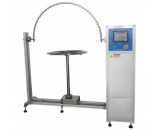

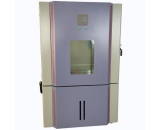
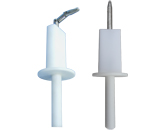
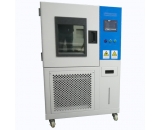
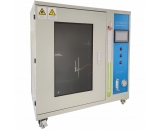
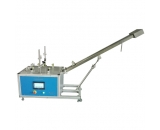
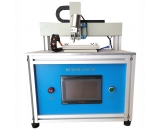
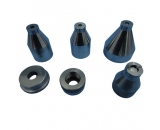
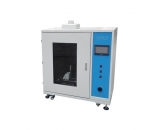
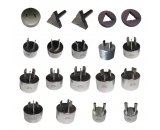
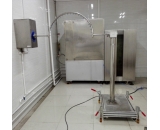
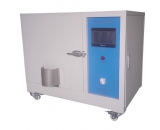
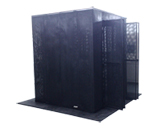
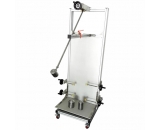
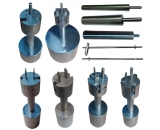
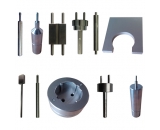
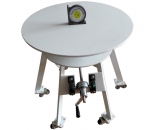
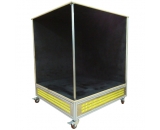
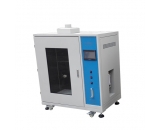
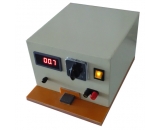
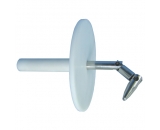
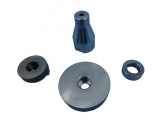
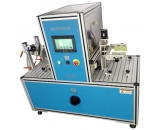
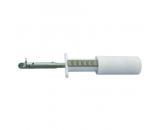
 提升卡
提升卡 置顶卡
置顶卡 沉默卡
沉默卡 喧嚣卡
喧嚣卡 变色卡
变色卡 抢沙发
抢沙发 千斤顶
千斤顶 显身卡
显身卡


